Tips for buying furniture in Singapore
Buying furniture in Singapore is arguably the most fun part of being a new homeowner – you’re finally able to create your dream home, free from the constraints of your parents’ final say. But sometimes, that’s just where the mighty fall.
Like many others before me, when I first had the chance to furnish my home, I only managed to perfect it as best as I could through tons of trial and error. So before you go crazy by finally buying that massive sofa you’ve always wanted, or by chionging to assemble all your furniture yourself, take a look at these common furniture-buying mistakes and how to avoid them:
Read more home styling tips here:
- Home styling tips for a high-SES feel
- Home decor tips to make your BTO look big & spacious
- Design tips to make your BTO feel like a boutique hotel
1. Not taking note of your home’s measurements
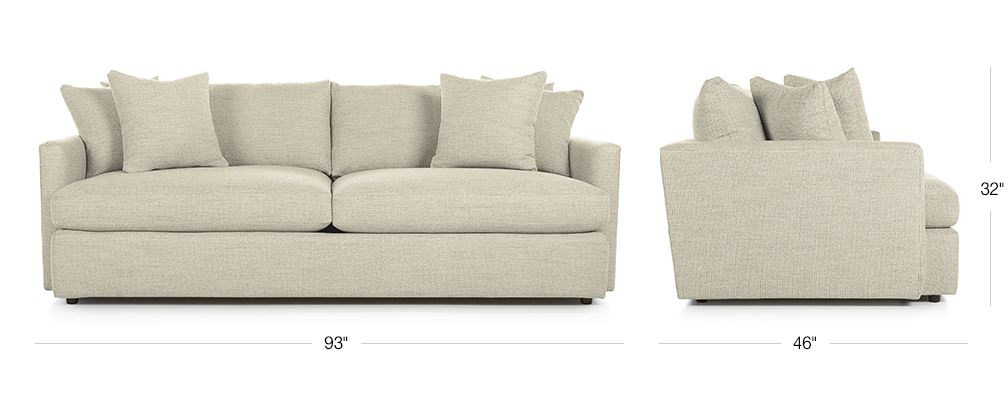
Image credit: Crate & Barrel
Probably the most deceiving thing about dealing with a completely empty home, is the fact that empty spaces tend to look much smaller than they actually are. So if you’re faced with a blank canvas, it’s best to jot down all your rooms’ measurements so you don’t end up with furniture that’s too big or small.
This can be especially tricky when buying multiple pieces of furniture for a room, like a TV console + coffee table + sofa set. Be sure you have enough space to comfortably walk through or around your living room, not forgetting to take any doorways into account in case a piece of furniture is blocking it.
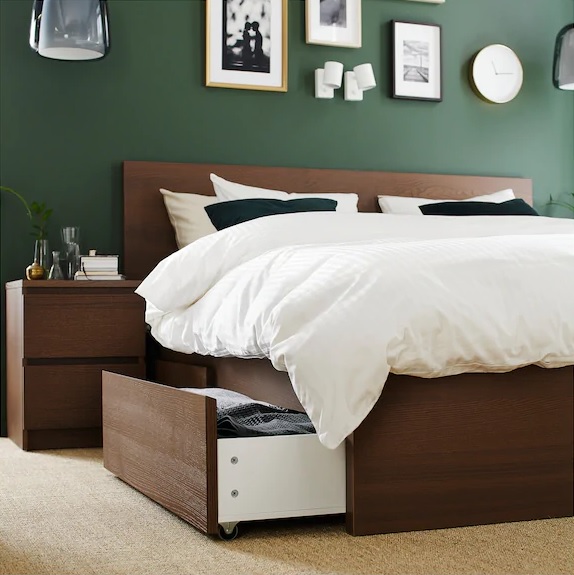
How I messed up: I got a bed with storage but insisted on getting 2 matching side tables on either side. This meant I couldn’t open the storage thanks to the lack of space in my room.
Image credit: IKEA
The good thing is, whether you’re shopping at a physical store or online, all products should come with measurements detailing its height, length and width. Save the measurements of the items you have your eye on, and do some quick math before swiping your credit card for it.
Pro-tip: Use string or tape to create a physical outline of where your furniture will be inside your home. That way, you can easily see if you have adequate space to move around, or if something turns out smaller than you expected.
2. Placing your TV too high or low
For most of us here in Singapore, the television is our home’s centerpiece. Since most of our furniture faces the TV, its placement is obviously rather important.
In case you don’t already know, the best viewing angle for your TV should be at about a 30° angle upwards from your sofa. So if you’re not planning to wall-mount it, be sure that your TV console isn’t shorter than your coffee table, so that the latter doesn’t block part of it.
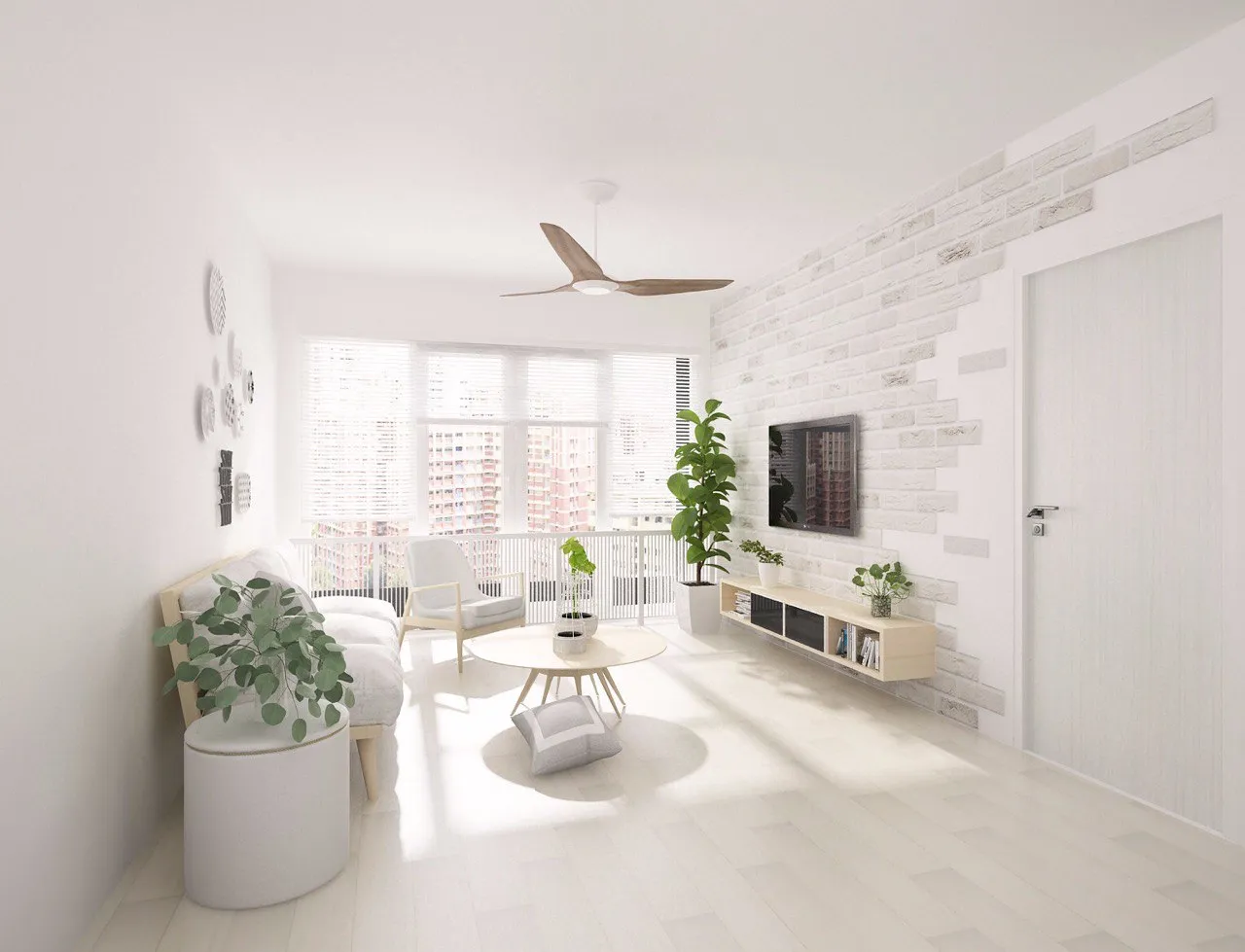
If you have a low TV console, consider having it wall-mounted for better visibility.
Image credit: AGCDesign
Likewise, you don’t want to have it sitting too high where you’ll have to crane your neck up. So again, consider using tape to create an outline to see exactly where your TV will go before permanently mounting it there.
3. Forgoing that assembly service fee
Buying new furniture in Singapore is a pricey affair, so additional assembly fees aren’t quite a welcome sight if you’re on a budget. So, if the furniture you’ve bought doesn’t come with free assembly, you may be tempted to DIY it, especially if it comes with instructions like IKEA furniture does.

Case in point: This same glass cabinet model shattered all over my living room floor and carpet when I tried to assemble it myself.
Image credit: Mirror
But for delicate or large furniture, sometimes it’s worth it to pay for that extra help. Unless you’re an experienced craftsman, you might not want to take chances with a heavy wardrobe that can later topple over due to bad workmanship, especially if you have young’uns who may have a penchant for climbing things.
On top of that, you can also avoid having pieces of your furniture come loose after a couple of years, or dealing with a drawer that can’t completely close because it’s just 2MM off-angle. Sometimes it’s better to pay an assembly fee that’s less than $100 than to permanently damage a piece of furniture that costs several hundreds of dollars.
4. Not QC-ing furniture that has been delivered to your home
Moving day can be pretty overwhelming, especially when you have all your new furniture coming in, with workmen assembling them all at the same time. But before you sign off on that delivery receipt, always do a thorough QC to check for defects like cracks, stains, scratches or anything out of the ordinary.
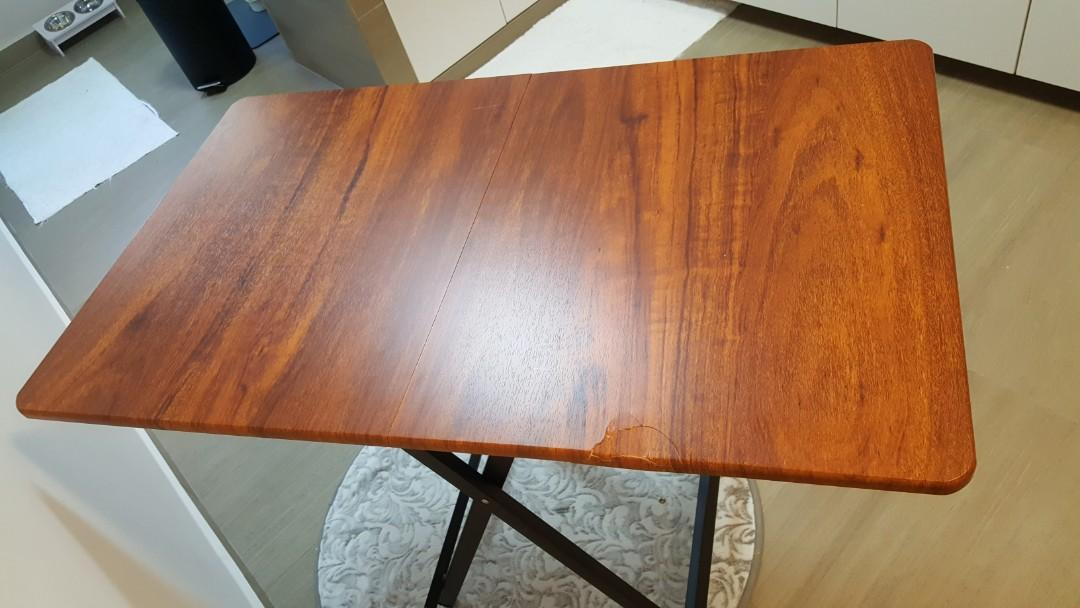
Furniture can get damaged en route to your home – spot the damage!
Image credit: Carousell
So even if the delivery guy has to wait a few more minutes, be sure to take the time to check for defects, and that home appliances and electronics are all in working condition.
This is because once you sign off on that receipt, it’s hard to argue your way to a refund or replacement if you find a defect later on. Be sure to note whether your items come with warranties, if there’s a trial period, or if there’s an absolute no-refund policy too.
Pro-tip: Always check the joining points of your furniture to see if it wobbles, or if there are any scratches or cracks from being screwed in.
5. Missing out on bundle deals
Unless you’re shopping during sale season, it’s easy to miss out on bundle deals while picking out furniture and appliances, so be sure to ask the salesman if there are any. This is because not every store explicitly states that there are discounts when you buy things in sets.
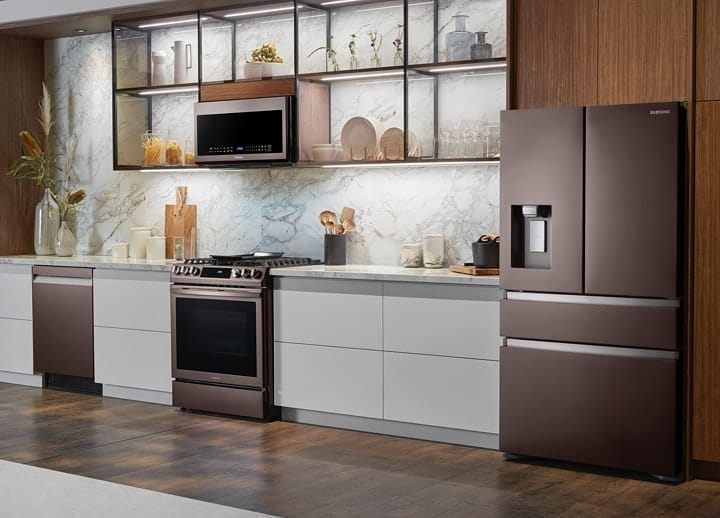
Getting items from the same brand also assures you’ll have a uniform theme across your home
Image credit: @samsunghomeappliances
For example, when shopping for home electronics or appliances, get as many as you can from the same brand. Most major retailers like Courts, Gain City and Best Denki have bundle discounts that can shave about 5%-10% off your final bill. And the more you buy, the higher the discount. The same can apply to furniture too.
Pro-tip: If you’re on a very tight budget and don’t mind “used” items, you can also check with the salesmen if there are display sets you can purchase. These are usually discounted at the store’s discretion, and you can kope items in 9/10 condition.
6. Not considering future life plans
Unless you have the budget to do frequent redecorating, buying furniture is a long-term commitment. Chances are you’re going to be using the same bed, sofa, wardrobes and cabinets for a good decade or so.
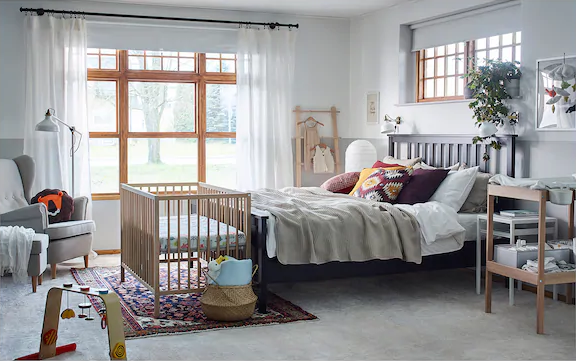
If you’re planning on having kids, leave space for play corners and cots in your home.
Image credit: IKEA
That’s why it’s important to pause and think about what your future plans are and how it will affect your home. Whether you’ll be accommodating elderly parents, having kids, or getting pets, these should play a part in your decision-making process.
For example, if you’re planning to get a pet – especially a cat – you may want to consider not splurging $3,000 on a leather sofa that’ll eventually double as a scratching post. Or if you’re planning to have kids, maybe KIV that delicate white carpet your future kid may accidentally get paint or food on.

The fate of my favourite ottoman after babysitting the office cat during the Circuit Breaker. Cat lovers, avoid furniture with woven fabrics as these are beacons for your cat’s claws.
Image credit: Jessica Fang
7. Getting furniture that’s hard to clean
For every art lover like myself, it’s a dream to have a home that’s filled with artwork, be it paintings, pottery, or carvings. But as someone who doesn’t have a lot of time to clean, I’ve avoided collecting these to display in my home.
This is because I constantly seem to be battling dust – clean any surface and 2 days later dust will reappear again. So unless you’re able to regularly have your home cleaned, you might want to stick to furniture and decor with smooth surfaces and less crevices for dust to get trapped in.
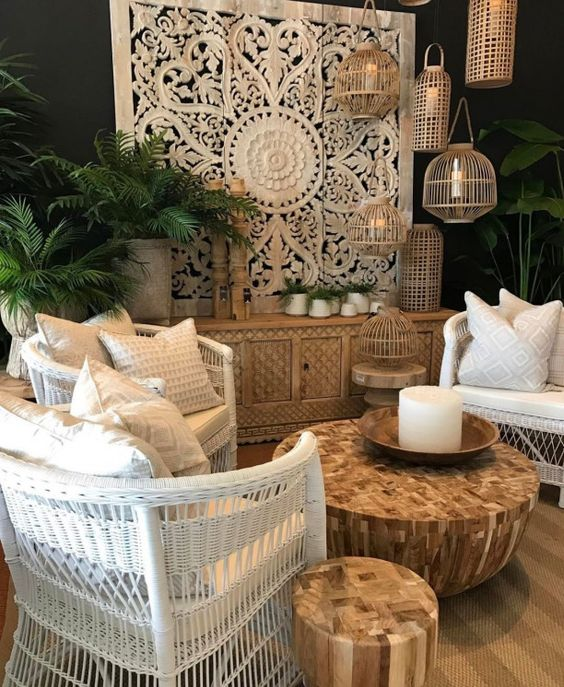
For those who love tropical themes with intricately woven furniture, do take its maintenance into account even if it looks darn good.
Image credit: Pinterest
8. Getting furniture that doesn’t fit your theme
The best advice I’ve ever gotten when decorating my home was to create a moodboard with examples of colour palettes, textures and themes you’d like to have in your home. You can easily find a large web of these on sites like Pinterest, or refer to catalogues from stores.
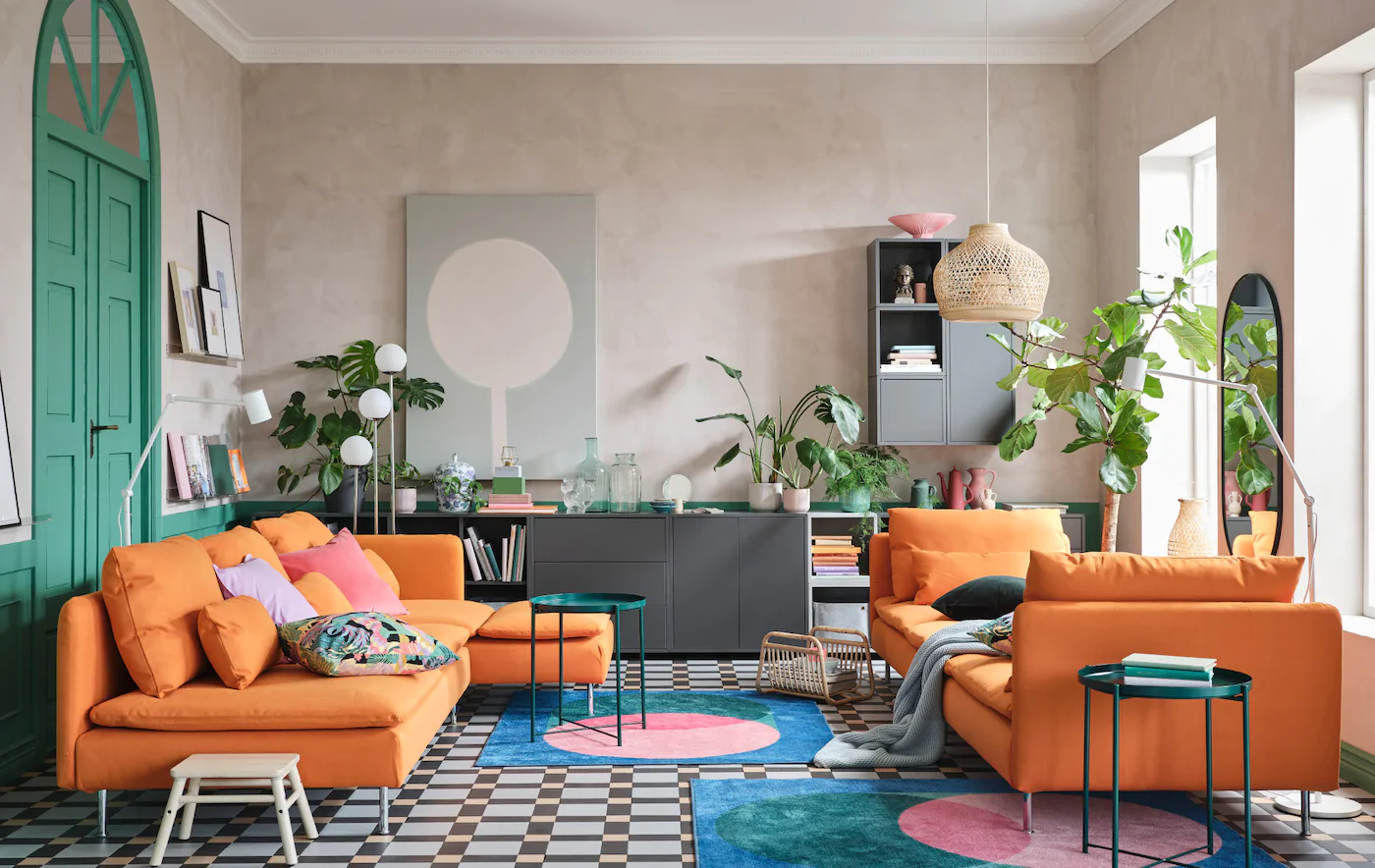
Stores like IKEA have an “inspiration” section so you can easily choose furniture that suits a theme you want.
Image credit: IKEA
Another easy way to create a theme is to set colour swatches that contain your room’s primary colours plus any colour accents you may want to go with. Bring a printout of your colour swatches with you when furniture shopping to see if there’s a fit, as showroom lighting may be different from your home’s one.
Once you’ve set a theme for your house or for individual rooms, be sure to stick to it. Buying a standalone impulse piece that doesn’t fit the theme or colour scheme of your home can throw the entire feel of your home off.
Pro-tip: A super low-effort way to make sure your theme works is to get the exact same furniture from a display set or catalogue that you like.
Tips on buying the right furniture in Singapore
 Avoid living out this famous furniture faux pas from Friends
Avoid living out this famous furniture faux pas from Friends
Image credit: NBC
When it comes to buying furniture in Singapore, there is no single formula that’ll fit everybody. But it does pay to do a little planning beforehand, just so you don’t end up wasting hard-earned cash on something you’re purchasing for the long run. So the next time you need to redecorate, check out these furniture buying tips to avoid rookie mistakes.
Check out these articles on buying home decor and furniture:
- IKEA Singapore items from $1.90 for aesthetic points
- Homeware and kitchenware wholesalers in Singapore
- Space-saving home furniture on ezbuy from $4
Cover image adapted from: Jessica Fang & Pinterest
Originally published on 28th June 2020. Last updated by Renae Cheng on 4th August 2021.

Drop us your email so you won't miss the latest news.










